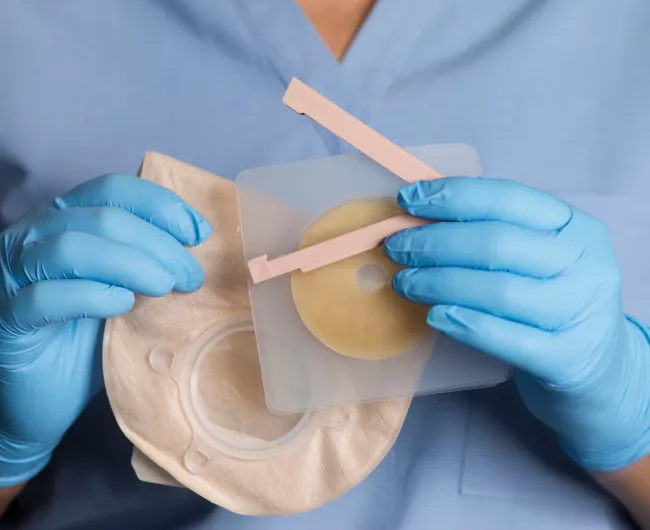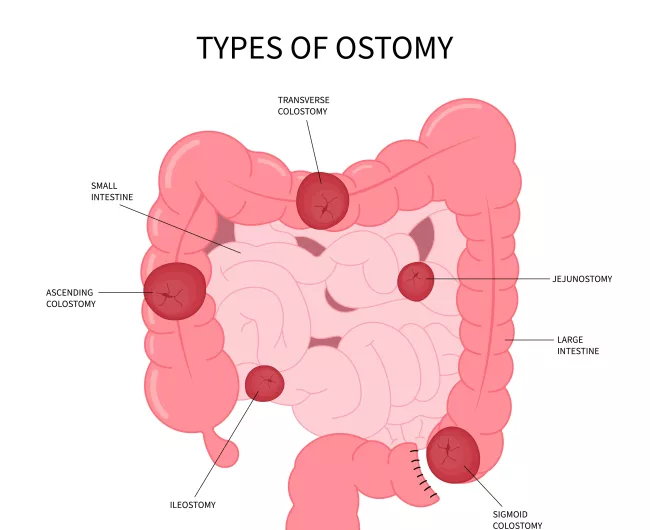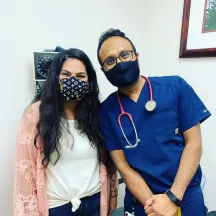
Colostomies and ileostomies
Some people who have surgery for colorectal cancer will need a colostomy or ileostomy. It may be temporary or permanent.


What is an ostomy?
Many colorectal cancer patients who have surgery to remove the cancer will need to have either a temporary or permanent ostomy afterward.
An ostomy, also called a stoma, is a surgically created opening in the skin of the abdomen that is connected to the small or large intestine.
Colostomies and ileostomies are both types of ostomies.

What does an ostomy do?
An ostomy allows feces (stool) to be diverted out through the ostomy instead of through the rectum and anus.
A bag is attached to the stoma to collect stool and gas and is emptied and changed as needed by the patient or their caregiver.

Types of ostomies
Depending on your surgery, you may have a colostomy or an ileostomy.
- A colostomy connects the colon to the stoma at the abdominal wall. The part of your large intestine below the stoma is bypassed or surgically removed.
- An ileostomy connects the bottom part of the small intestine (the ileum) to the stoma at the abdominal wall. The entire large intestine is bypassed or surgically removed.
Temporary vs. permanent ostomy
Colostomies and ileostomies can be temporary or permanent:
A temporary colostomy or ileostomy may be needed to give a portion of the bowel a chance to rest and heal after surgery. Generally, temporary ostomies are in place for about three to six months. When the affected part has healed, the colostomy is surgically reversed, and normal bowel function is restored.
A permanent colostomy usually involves the last of part of the colon, most commonly the rectum. The end of the remaining portion of the colon is brought out to the abdominal wall to form the stoma.





